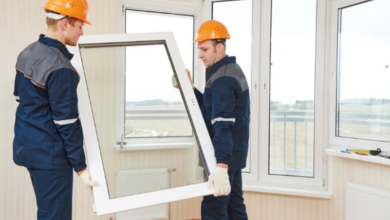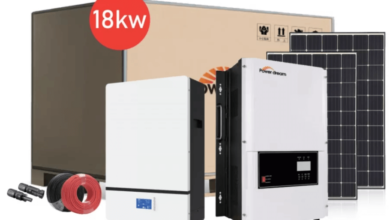You Have to Get Rid of Poison Ivy and Here’s Why

Poison ivy may seem like a small problem at first, but it may turn into a painful, expensive health problem that keeps coming back. For a lot of people who own property on the East Coast, it’s not just about avoiding a few itchy bumps. People who come into contact with poison ivy can have very bad allergic reactions, long-term skin damage, and even breathing problems. That’s why businesses like Poison Ivy Free offer professional poison ivy removal services: you can’t just ignore the problem.
Poison Ivy: More Than Just a Weed
Poison ivy could look like the other plants around it at first. You can find it in woodland regions, along fence lines, in backyards, and even in cities. One reason it’s so hard to handle is that it can change.
Urushiol, a colorless, odorless oil that is found in every part of the poison ivy plant, is what makes it really harmful. Almost 85% of people are allergic to it, and even a little bit of touch can cause rashes, blisters, or worse.
The plant doesn’t just go away; urushiol stays behind. It stays on clothes, tools, pet hair, and even beneath fingernails. Doctors say that urushiol can stay active for months, which is why cleaning up properly is equally as vital as getting rid of it.
Risks of Poison Ivy Exposure in the Short Term
Most people think that poison ivy rash makes them itch, and indeed, it’s the most typical effect. But for some people, the effect is worse.
Some signs of this are:
- Blisters that hurt and can last for weeks
- Eyes or limbs that are swollen
- Infection from sores that are open
- If you breathe in urushiol, it might make it hard to breathe.
The severity of the reaction varies from person to person and depends on how much urushiol they were exposed to. Kids, landscapers, hikers, and those who work outside are especially at risk.
What Happens in the Long Run If You Ignore It
Poison ivy can do the following if it is not handled or allowed to grow back:
- Spread quickly through underground runners
- Come back every year from seeds that birds drop.
- If urushiol stays on surfaces, it might cause skin problems again.
Make your outside spaces less useful and safe
Poison ivy is quite hard to get rid of after it has grown, and you usually need help from a specialist. Many times, when you try to remove anything yourself, you leave behind root pieces that come back in a few weeks.
Do you think you have it all? Think Again
You could still be in danger even after you pull the plant out of the ground. Urushiol doesn’t break down easily, which is why. It can still cause reactions long after the plant is gone, in fact.
To really get rid of the threat, you also need to get rid of the residue that is left behind. Here are some important things to do:
Use isopropyl alcohol or degreasing soap to clean equipment and gloves.
Separate the dirty clothes and wash them in boiling water.
Wipe down things like doorknobs, garden hoses, and pet collars.
Don’t be fooled by things that look like poison ivy.
Another reason you have to get rid of poison ivy is that a lot of people can’t see it well. If you don’t know what poison ivy is, you might leave it alone or touch it by mistake. Some plants look alike, such as:
- Virginia creeper has five leaflets.
- Boxelder (leaves arranged in opposite pairs)
- Raspberry bush with prickly stalks
Wrong identification leads to bad removal results, continued exposure, and false confidence. Here is a useful link: Tips for Identifying Poison Ivy
What You’re Really Paying For When You Hire a Professional Removal Service:
Poison Ivy Free is more than just plucking plants; it’s about full protection.
People who know will:
- Be able to tell poison ivy and plants that look like it apart with ease.
- To stop regrowth, take out the whole root system.
- Get rid of spots that are dirty
- Use tactics that will help stop future epidemics.
- This degree of upkeep makes your property safer and less likely to need repairs in the future.
Keep your family, pets, and things safe.
Poison ivy removal is a health and safety hazard for everyone who owns a home, business, or public area. Kids playing outside, pets running through the bushes, or guests at your backyard BBQ shouldn’t have to worry about getting a rash that ruins their week.
Before it spreads, take it seriously.
Ignoring poison ivy can lead to more than just itching skin. This plant is not something to take lightly. It can leave behind residue and cause dangerous breathing problems. The good news is? You don’t have to accomplish it by yourself.
Contact Poison Ivy Free for professional help with finding, getting rid of, and stopping poison ivy outbreaks. They have locations all around the East Coast and can keep your property safe, clean, and free of bugs.





